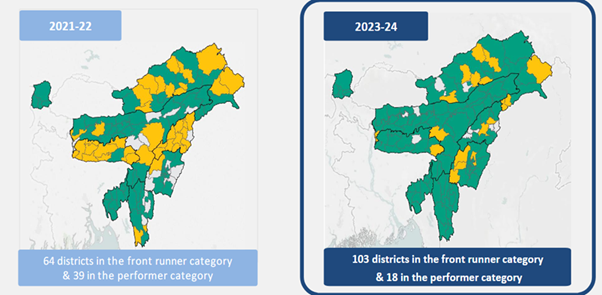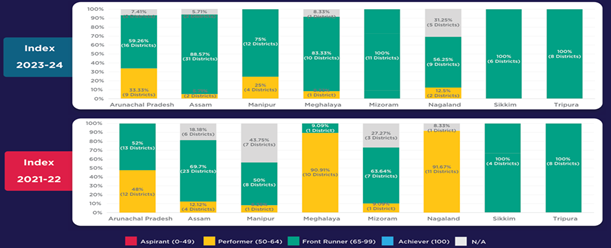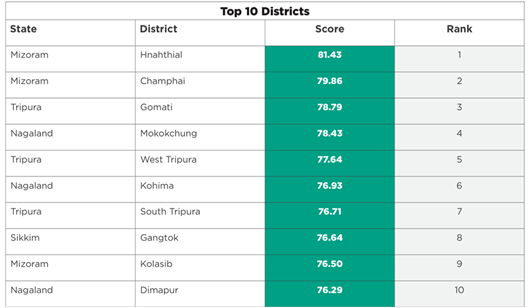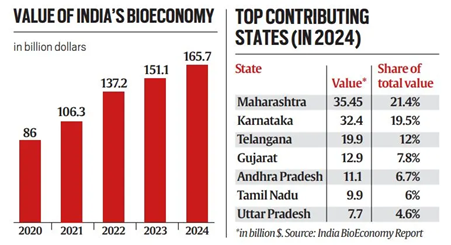Topic- 1: Tiny Plasma Loops in Sun’s Atmosphere Reveal Clues to Solar Explosions
GS-1: Geography
The context:
A team of astronomers, including researchers from the Indian Institute of Astrophysics (IIA), has uncovered miniature plasma loops in the lower solar atmosphere that could provide key insights into how the Sun stores and explosively releases magnetic energy.
Key Highlights of the Discovery:
-
- A breakthrough by astronomers has revealed tiny, short-lived plasma loops in the Sun’s lower atmosphere, offering new insights into how the Sun stores and releases magnetic energy.
- These miniature loops, though only 3,000–4,000 kilometers long and under 100 kilometers wide, have remained largely undetected due to their small size and transient nature.
- The research was conducted by astronomers at the Indian Institute of Astrophysics (IIA), in collaboration with NASA, the Max Planck Institute for Solar System Research, and the Big Bear Solar Observatory (BBSO).
- The team used high-resolution imaging and spectroscopy from instruments including BBSO’s Goode Solar Telescope, NASA’s IRIS, and SDO to capture and analyze these elusive structures across multiple wavelengths.
- These tiny loops, visible in the H-alpha spectral line of Hydrogen, appeared as bright arcs and were observed clearly for the first time using advanced imaging techniques.
- Spectroscopic data revealed significant line broadening and intensity enhancements, indicating the presence of magnetic reconnection—a process where magnetic fields snap and realign, releasing large amounts of energy.
- Observations showed that plasma jets erupting from the tops of these loops shared their origin, likely driven by explosive reconnection events involving tiny solar filaments.
- Using Differential Emission Measure analysis, researchers found plasma temperatures inside these miniature loops reaching several million degrees, despite their location in the denser chromosphere.
- The extreme heating of these loops is puzzling given their small size and dense environment, and further spectroscopic studies are needed to better understand this phenomenon.
- Future telescopes like India’s proposed 2-meter National Large Solar Telescope (NLST) near Pangong Lake in Ladakh may provide even deeper insights into these small-scale but crucial solar features.

Source: PIB
Topic- 2: NITI Aayog Releases 2nd Edition of North Eastern Region District SDG Index (2023–24)
GS-2: Governance
The context:
NITI Aayog, in collaboration with the Ministry of Development of North Eastern Region (MoDoNER) and UNDP, released the second edition of the North Eastern Region District SDG Index (2023–24), highlighting significant progress in sustainable development across 121 districts of the eight northeastern states.
Key Highlights:
-
- 85% of districts saw improvement in their composite SDG scores.
- Hnahthial, Mizoram ranked as the best-performing district in the region with a score of 81.43.
- All districts in Mizoram, Sikkim, and Tripura attained Front Runner status (scores between 65–99).
- Nagaland made a notable improvement with three districts entering the top 10.
- Sikkim demonstrated the most consistent district-level performance, with minimal score variation.
- Assam’s districts showed significant gains in Zero Hunger, Quality Education, Clean Water & Sanitation, and Decent Work & Economic Growth.
- Good Health & Well-being indicator saw improved scores in 93 districts.
Overall performance of the NER Region:

State-wise overall performance of districts over the last two editions:

Top 10 Districts in NER District SDG Index 2023-24:

District Performance Range:
-
- Highest: Hnahthial, Mizoram (81.43)
- Lowest: Longding, Arunachal Pradesh (58.71)
Purpose:
The NER District SDG Index 2023-24 serves as a critical policy tool for evidence-based planning, resource allocation, and monitoring of developmental efforts. The significant improvement in district performance reflects the impact of national flagship schemes coupled with localisation efforts through initiatives like the Aspirational Districts Programme. The index report provides detailed district-level analysis and recommendations for accelerating progress towards achieving the SDGs by 2030, ensuring that no district is left behind in the region’s development journey.
Source: PIB
Topic- 3: Japan Coast Guard Ship ‘Itsukushima’ Docks in Chennai to Boost Maritime Cooperation with India
GS-2: IR
The context:
On July 7, 2025, the Japan Coast Guard (JCG) Ship Itsukushima, commanded by Captain Naoki Mizoguchi, arrived at Chennai Port as part of its Global Ocean Voyage Training. This visit underscores the strengthening of India-Japan maritime ties in the Indo-Pacific region, reinforcing cooperation under the 2006 Memorandum of Cooperation and aligning with India’s SAGAR vision and Indo-Pacific Oceans Initiative (IPOI).
Key Highlights:
-
- The week-long port call features:
- High-level bilateral meetings
- Joint professional training and cultural exchanges
- Courtesy visits, reciprocal ship tours, yoga sessions, and sporting events
- The visit will culminate in a joint sea exercise named ‘Jaa Mata’ on July 12, 2025, enhancing interoperability between the Indian Coast Guard (ICG) and JCG.
- As a gesture of deepening ties, four ICG officers will embark on Itsukushima to Singapore as Sea Riders, continuing long-standing professional exchange practices.
- The week-long port call features:
India and Japan Relations:
-
- Historical and Cultural Ties: Both countries share spiritual and cultural traditions, such as the influence of Hinduism on Japan’s Seven Lucky Gods and historical connections like the 752 AD consecration of Lord Buddha’s statue by Indian monk Bodhisena at Todaiji Temple in Japan.
- Establishment of Relations: After WWII, India opted for a separate Peace Treaty with Japan, signed in 1952, marking the start of formal diplomatic relations.
- Strategic Synergy: Both nations align on key regional initiatives, such as India’s Act-East Policy, Indo-Pacific vision (SAGAR), and Japan’s Free and Open Indo-Pacific Vision.
- Trade and Investment: Japan is a key ally in India’s economic growth, with FDI from Japan exceeding $43 billion from 2000 to 2024, making it India’s fifth-largest source of foreign investment.
- In 2023-24, the country’s export to Japan was $5.15 billion and imports were $17.7 billion. The trade gap was $12.55 billion.
- Collaboration on Global Initiatives: Japan and India cooperate in initiatives like the International Solar Alliance (ISA), Coalition for Disaster Resilient Infrastructure (CDRI), and Leadership Group for Industry Transition (LeadIT).
- Both countries work together in multilateral frameworks like the Japan-Australia-India-U.S. Quad and the India-Japan-Australia Supply Chain Resilience Initiative (SCRI).
- Integral Defense Partnership: India-Japan defense cooperation is a key pillar of bilateral ties, focused on Indo-Pacific peace, security, and stability.
- Key Agreements:
- Joint Declaration on Security Cooperation (2008).
- Memorandum of Defense Cooperation (2014).
- Agreements on Defense Equipment & Technology (2015) and Protection of Classified Military Information (2015).
- Reciprocal Provision of Supplies and Services Agreement (2020).
- Exercises and Joint Activities: Maritime Exercise Malabar.
- First Bilateral Fighter Exercise, Veer Guardian, in Japan (2023).
- First-ever Army-to-Army Exercise Dharma Guardian held in Japan ( 2023).
- Exercise Shinnyu Maitri between IAF and JASDF.
- JIMEX joint Naval Exercise between two nations.
- Key Agreements:
- Connectivity Projects in India: The first High Speed Rail (HSR) corridor is being implemented from Mumbai to Ahmedabad with technical and financial assistance from Japan.
- Presently, six Metro Rail projects (Ahmedabad, Bangalore, Chennai, Delhi, Kolkata, Mumbai) are being implemented with technical and financial support from Japan.
- Space Collaboration: ISRO and JAXA collaborate in X-ray astronomy, satellite navigation, lunar exploration, and the Asia Pacific Regional Space Agency Forum (APRSAF).
- In 2016, they signed a Memorandum of Cooperation (MoC) for peaceful space exploration and use.
Challenges
-
- Trade Imbalance: There is a significant trade imbalance, with Japan exporting more to India than India exports to Japan, creating a need for better reciprocal trade.
- Geopolitical Tensions: Regional security issues, such as China’s influence in the Indo-Pacific, pose challenges for India-Japan relations, requiring careful diplomatic balancing.
- Cultural and Language Barriers: Despite strong ties, differences in language, culture, and business practices pose challenges to deeper integration.
- Limited People-to-People Exchanges: The scale of people-to-people interactions is still limited, impacting deeper mutual understanding.
- Infrastructure Constraints: Despite improvements, some areas in India still lack the infrastructure necessary to support large-scale Japanese investments effectively.
- Different Economic Priorities: India’s focus on rapid economic growth may sometimes contrast with Japan’s emphasis on sustainable development and technology.
Way Ahead
-
- Enhance Trade and Investment: Focus on reducing the trade imbalance by increasing Indian exports to Japan and encouraging Japanese investment in India’s manufacturing and technology sectors.
- Boost People-to-People Connections: Increase cultural exchanges, tourism, and educational collaborations to deepen mutual understanding.
- Technology and Innovation Partnership: Leverage Japan’s expertise in technology and India’s growing digital sector to collaborate in AI, robotics, renewable energy, and space exploration.
- Address Environmental Concerns: Increase cooperation on environmental sustainability, climate change, and disaster resilience to support both countries’ green energy goals.
Source: PIB
Topic- 4: World Bioproduct Day 2025
GS-3: Economy and Sci & Tech
The context:
On July 7, 2025, Union Minister of Science & Technology, unveiled India’s ambitious goal to build a $300 billion bioeconomy by 2030 during the nationwide celebration of World Bioproduct Day – The BioE3 Way. The event, organized by the Department of Biotechnology (DBT) along with BIRAC and iBRIC+, featured the innovative ‘Voices Across the Cities’ — a synchronized national dialogue series that showcased India’s diverse bioproduct capabilities through regional, theme-based discussions across major cities.
Key Highlights of the Event World Bioproduct Day 2025:
-
- India has set an ambitious target to achieve a $300 billion bioeconomy by 2030, announced during the nationwide celebration of World Bioproduct Day.
- Every Indian is considered a stakeholder in the biotechnology mission, highlighting the need for wider public understanding and inclusive participation.
- The event featured ‘Voices Across the Cities,’ a synchronized national dialogue series held across multiple Indian cities, showcasing the country’s diverse bioproduct capabilities.
- The initiative was described as more than a science gathering—an outreach movement involving students, startups, and industry leaders aimed at sustainable biotech growth.
- India’s biotechnology ecosystem has expanded from around 50 startups a decade ago to nearly 11,000 today, supported by strong policy frameworks and institutional partnerships.
- The recently launched BioE3 Policy aligns India’s bioeconomy goals with sustainability, economic growth, and equity, positioning the country as a leader in sustainable biomanufacturing.
- Bioproducts are making an impact beyond laboratories, contributing to livelihoods through biodegradable packaging, eco-friendly personal care products, rural employment, and green jobs.
- The National Education Policy 2020 facilitates students pursuing disciplines of interest, helping to overcome challenges faced by young scholars in biotechnology.
- India’s rich natural resources and traditional knowledge are recognized as valuable assets, attracting foreign researchers seeking the country’s unique biodiversity.
- The Department of Biotechnology is implementing the BioE3 Policy by supporting pilot manufacturing, region-specific innovation missions, and strengthening the pipeline from research to market, with a focus on linking biotechnology to profitability and livelihoods.
What is Bioeconomy?
-
- Bioeconomy refers to the industrial use of biological resources (plants, animals, and microorganisms), and the replication of natural biological processes in the production of goods and services.
- Bioresources like plants or microorganisms are renewable, relatively cheap, and locally available, while natural processes are more sustainable and eco-friendly.
- A prime example of this is the growing use of ethanol, which is produced through fermentation of crops like sugarcane or corn by microorganisms, as a biological alternative to fuels traditionally derived from hydrocarbons.
Why Bioeconomy Matters for India?
-
- Economic Growth & Jobs:
- Expected to contribute $1 trillion by 2047.
- The number of companies in the bioeconomy has increased by almost 90% in the last three years.
- Nearly half the value of the bioeconomy (roughly $78 billion) was generated in the industrial sector, for the development and use of biofuels and bioplastics.
- Economic Growth & Jobs:

-
- Food & Agriculture Security:
- GM technologies improve yields by 21%.
- Biofertilizers enhance soil health.
- Innovations like golden rice combat micronutrient deficiencies.
- Healthcare Access:
- Affordable drug and vaccine production (e.g., CERVAVAC – HPV vaccine).
- Gene therapy advancements (e.g., Hemophilia A trial).
- India supplies 25% of WHO’s total vaccine volume.
- Environmental Benefits:
- Promotes circular economy via waste-to-energy technologies.
- Reduces reliance on fossil fuels with biogas and ethanol.
- Supports biodiversity conservation and eco-restoration (e.g., TERI’s Oilzapper).
- Climate Action:
- Helps achieve India’s net-zero target by 2070.
- Reduces emissions through bio-based alternatives.
- Food & Agriculture Security:
BioE3 Push For India’s Bioeconomy
-
- To catalyze this growth, the government launched the BioE3 policy in 2024—Biotechnology for Economy, Environment, and Employment.
- The policy promotes:
- Establishment of Bio-AI Hubs, Bio-Foundries, and Bio-Enabler Hubs
- Focus on advanced technologies, sustainable biomanufacturing, and pan-India implementation
- Assam became the first state to formally adopt the BioE3 framework, setting the stage for widespread national rollout.
Other Initiatives
-
- BioSaarthi Mentorship Initiative (2025): BioSaarthi is designed as a six-month cohort facilitating structured mentor-mentee engagements, offering personalized guidance to emerging entrepreneurs in the biotech sector.
- Draft National Biotechnology Development Strategy (2020–25): Targets $150 billion bioeconomy by 2025, focusing on R&D innovation, Industry competitiveness & startup growth.
- Biotechnology Industry Research Assistance Council (BIRAC): Public sector interface to Fund biotech startups.
- National Biopharma Mission: Supports clinical trials, biosimilars, biotherapeutics, and vaccine development.
- PM-JIVAN Yojana: Focus on bioethanol and compressed biogas from agri-waste.
- SATAT & GOBARdhan Schemes: Promotes bio-CNG plants and waste-to-energy models, aligned with rural bioeconomy goals.
- Global Biofuel Alliance (2023): Led by India, USA, and Brazil to strengthen biofuel supply chains and reduce fossil fuel dependence.
- IP Guidelines (2023): Encourages commercialization of public-funded research.
Challenges to Address
-
- Despite progress, India’s bioeconomy faces several hurdles:
- Fragmented Regulation: Overlaps between agencies delay biotech approvals.
- Limited Investment: High risk and long return on investment deter private capital.
- IP & Bio-piracy Issues: Weak enforcement hampers innovation and indigenous protection.
- Weak Industry-Academia Linkages: Limits commercial translation of research.
- Import Dependence: On high-end equipment and biotech inputs.
- Skill Shortages: Need for trained professionals in genomics, bioinformatics, etc.
- Public Perception: Skepticism around GMOs and lab-grown food remains high.
- Environmental Risks: Overexploitation of biological resources could harm biodiversity and land use.
- Despite progress, India’s bioeconomy faces several hurdles:
Source: PIB
Spread the Word
